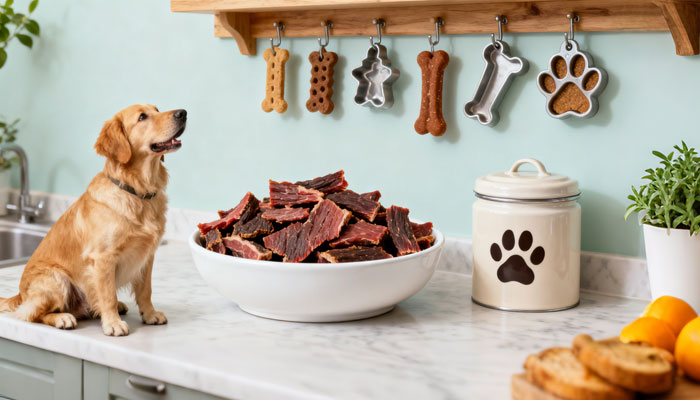Are Homemade Dog Treats Really Good?
I. Owners’ “Homemade Obsession”: Misconceptions from Main Meals to Dog Treats
Many owners think dry dog food is bland and unappetizing, with unknown additives. They believe homemade meals are superior—suitable for daily meals and delicious treats, offering freshness, nutrition, and health benefits that dogs adore.
But is homemade really better? This question is quite contradictory. Many owners think homemade is just about buying some meat and vegetables, cooking them up for their dog to eat. Whether as a main meal or as dog treats, they feel it’s “simple and safe.”
II. Homemade Isn’t Simple: Even Dog Treats Require Nutritional Knowledge
Not quite. Homemade food is a complex endeavor. Even when making small batches of dog treats, ensuring proper nutrition and avoiding waste requires careful ingredient pairing. If serving as a main meal, you must research your dog’s appetite, specific nutritional needs, select fresh ingredients, and manage proper storage afterward.
We often enjoy making treats from fresh ingredients like chicken breast jerky or steamed veggie-meat mixes. While these are great snacks, relying solely on homemade treats for every meal risks long-term nutritional imbalances.
III. Professional Nutrition: Dog Treats and Main Meals Share the Same “Nutritional Logic”
Generally, owners rely on books + online searches + forums + self-awareness to prepare homemade meals (including homemade dog treats), which is far from sufficient. Even cooking for humans requires consideration of taste and nutrition; preparing meals for dogs demands even greater care. Pet nutrition is a specialized field. Whether it’s daily meals or occasional treats, the nutritional structure, balance, and scientific proportions are crucial.
Certain ingredients found in commercial dog food are absent from ordinary vegetables and require separate supplementation. The same principle applies to dog treats: if you aim for treats that deliver both “deliciousness” and “nutritional supplementation”—such as calcium-fortified treats—you must add pet-specific calcium powder rather than relying solely on the calcium content of the ingredients themselves.
IV. Storage Details: Prevent Homemade Dog Treats from Becoming a Health Risk
Proper storage is crucial for both daily meals and batch-made treats: If preparing large quantities of main meals, ensure they are sealed tightly during refrigeration or freezing to prevent odor transfer. Homemade meat treats that aren’t thoroughly dried can easily harbor bacteria, leading to digestive issues in dogs.
V. Rational Choices: Opt for Commercial Dog Food as the Main Meal, Combine Homemade and Store-Bought Treats
In summary, while some may view commercial dog food negatively, products from reputable manufacturers are generally safe to feed. Moreover, many dog owners are working professionals with limited time and energy, making commercial dog food the most practical choice for the main meal.
If owners have the time, they can certainly prepare tasty treats using fresh ingredients, such as homemade dog treats or chew sticks—most dogs adore these, and they enhance bonding while offering varied flavors. However, I personally don’t recommend making homemade meals for your dog long-term unless guided by a professional nutritionist. As for dog treats, I suggest combining homemade options with professionally made ones. Switching flavors occasionally prevents your dog from becoming picky due to a preference for homemade snacks.
admin
-
Sale!

Washable Pet Cooling Pad for Cats and Dogs
$10.99Original price was: $10.99.$9.99Current price is: $9.99. This product has multiple variants. The options may be chosen on the product page -
Sale!

Washable Cat Window Hammock Cooling Bed
$23.99Original price was: $23.99.$22.99Current price is: $22.99. -
Sale!

Tropical Amphibian Rainforest Tank, Lizard Cage
$38.99Original price was: $38.99.$36.99Current price is: $36.99. -
Sale!

Silent 4-in-1 Waterproof Charging Dog Hair Trimmer
$49.88Original price was: $49.88.$47.99Current price is: $47.99.
